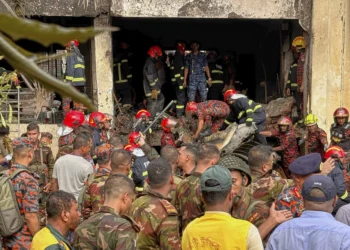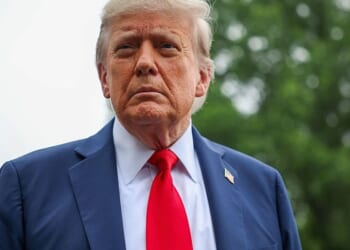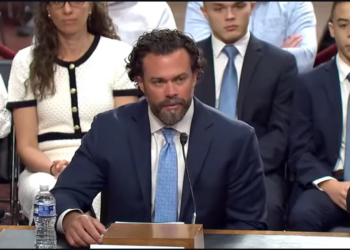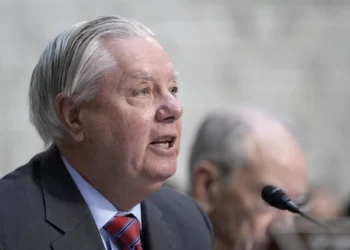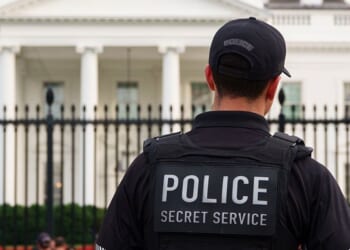
In Donald Trump’s home town, New York mayoral candidate Zohran Mamdani plays fast and loose with “globalize the Intifada,” the latest euphemism for killing Jews en masse. That invites a look at how a future president responded to the European “intifada” under the German National Socialist regime. Consider “Documenting History: Eisenhower and the Holocaust,” from the website of the National Park Service.
As Supreme Commander of the Allied Expeditionary Force in Europe, General Eisenhower was
equally crucial in the documentation of Nazi brutality and the truth of the Holocaust. Eisenhower’s efforts to document the reality of concentration camps was driven by a profound sense of duty, both to history and humanity. Eisenhower knew that history was bound to repeat itself if not properly addressed, and felt it was his responsibility to ensure that the horror of the Holocaust was witnessed throughout the world.
During WWII, leading Nazi Heinrich Himmler authorized a new plan to systematically murder the European Jews through forced labor camps, extermination camps, concentration camps, and transit camps. While the Allies fought to liberate German-held territories, the Nazis implemented their “final solution.” On April 4, 1945, American troops liberated Ohrdruf, an extension of the Buchenwald concentration camp. There the troops witnessed
piles of naked corpses, dozens of train cars that were filled with decomposing human remains, and “walking skeletons.” In numerous interviews, liberating soldiers described the dead as being “stacked like cordwood,” an impactful metaphor that not only dehumanized the victims but demonstrated how liberators tried to maintain their sanity. Recognizing each of those bodies as fully human would be mentally debilitating for the soldiers, and for some, too much to bear. Surrounding the American soldiers was the horror of mass graves, bodies, and people near death and in need of help. The discovery of the Ohrdruf camp opened the eyes of many US soldiers to the horrors perpetrated by the Nazis during the Holocaust.
Generals Eisenhower, Patton, and Bradley visited Ohrdruf on April 12, 1945. Eisenhower had “never been so angry in his life” and told colleagues that the “English language didn’t even have words that could describe what he saw.” As Eisenhower told Winston Churchill, “everything you read in the paper does not adequately describe what has really happened here.”
In a letter to Army Chief of Staff George Marshall, Eisenhower said “the things I saw beggar description . . . I made the visit deliberately in order to be in a position to give firsthand evidence of these things if ever, in the future, there develops a tendency to charge these allegations merely to ‘propaganda.’” Conditions of “indescribable horror prevail,” Eisenhower wrote, and “whatever has been printed on them to date has been an understatement.”
Marshal began organizing trips to the camps by members of Congress. After witnessing camps Dora-Mittelbau, Dachau, Mauthausen, and Buchenwald, all liberated by American forces, the delegation claimed that the Nazi regime had committed “no less than organized crime against civilization and humanity” and pressed for public release of images so the world would know what had taken place. As the world would soon know, it did not end with the war.
Stalin swung the captive nations back to their traditional anti-Semitism, branding Jews “rootless cosmopolitans.” Days after Eisenhower’s presidential victory in 1952, the Communist Czech regime tried and executed 11 high government officials, including Rudolf Slansky, general secretary of the Communist Party. They were all executed “for being Jews and nothing else,” contended film director Robert Rossen, son of Russian Jewish immigrants.
President Eisenhower, who served until 1960, would have been startled by resurging anti-Semitism, the attack of October 7, 2023, and candidates such as Zohran Mamdani. “Ike,” as the president was known, would recognize the meaning of “globalize the Intifada,” and that is also true of President Donald Trump. His administration should push for better education on the Holocaust, including imagery from the 10/7 massacre, the worst attack on Jews since the horrors witnessed by General Eisenhower, and there was more to it.
On April 12, 1945, days after the Americans liberated Ohrdruf, troops of Canada’s Eighth Reconnaissance liberated the Westerbork transit camp from which the Nazis sent 107,000 Dutch Jews to Auschwitz, Buchenwald and such. Witness footage of Westerbork in 1943, with Nazi troops loading Jews into boxcars. The Canadians gave food and medical treatment to the 876 Jews who remained, then continued the fight until Holland was finally liberated on May 5.
Canada’s remaining WWII veterans will be shocked at surging anti-Semitism in Canada.
Veterans of the 8th Reconnaissance, and their descendants, will be outraged that Yaroslav Hunka, who served under Nazi command with the Waffen-SS Galicia Division, was hailed as a “Canadian hero” in Canada’s Parliament.
Prime Minister Carney would do better to recall a plus brilliant exploit like the liberation of Westerbork. For his part, President Trump should globalize Gen. Eisenhower’s campaign of Holocaust education, updated to include the 10/7 massacre. In 2025 moving forward, it’s all about memory against forgetting.


